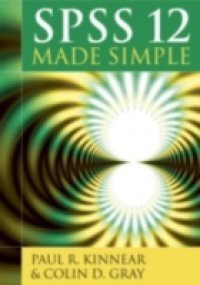SPSS 12 Made Simple provides a step-by-step coverage of every aspect of data analysis with SPSS from data entry to interpretation of the output. As well as advice on data entry and checking, there is guidance on the best ways of describing a data set and the choice of an appropriate statistical technique. Finally, the output is fully explained, with reference to fully annotated SPSS output. Extensive illustrations show exactly what is on the screen at every stage of the process, helping the reader to avoid common pitfalls and check their progress along the way. Most chapters end with practical exercises to illustrate the main points raised and allow the reader to test their understanding; but there is a final general revision section with further exercises on a range of topics. In view of the recommendations of the American Psychological Association, the book now contains advice on strength of effect, power and sample size. There is also guidance on how to report the results of statistical tests in journal articles. This new edition is written with the same clarity that has made the book such a success in the past. The initial chapters provide an introduction to the basics of SPSS, such as data entry, followed by more advanced techniques, such as sorting, case selection, aggregation and file merging. In these early chapters, the emphasis is upon checking the accuracy of data entry and exploring the data thoroughly before making any formal statistical tests. There is also extensive coverage of the powerful new graphics capabilities of SPSS 12. Each of the later chapters is devoted to a particular statistical technique. SPSS 12 Made Simple:*Covers a wide range of statistical tests including t-tests, ANOVA, correlation, regression, multi-way frequency analysis, discriminant analysis, logistic regression and factor analysis. *Shows you how to get as much out of your data as possible. *Gives advice (with appropriate cautions and caveats) on choosing a statistical test. *Makes extensive use of annotated screen snapshots of SPSS output, windows and dialog boxes. *Includes both chapter-specific and general exercises. *Has a comprehensive index.

